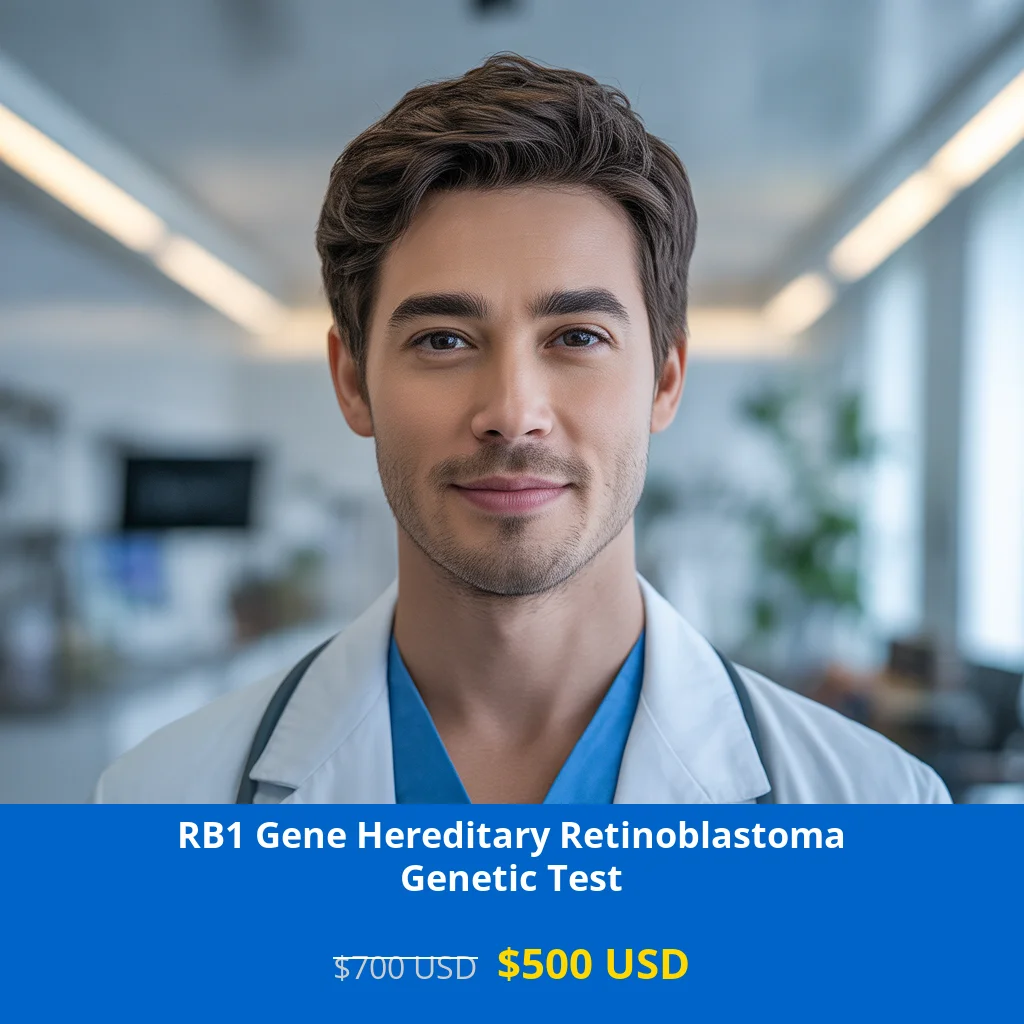RB1 Gene Hereditary Retinoblastoma NGS Genetic DNA Test
Comprehensive Genetic Testing for Hereditary Eye Cancer Risk
The RB1 Gene Hereditary Retinoblastoma NGS Genetic DNA Test represents a breakthrough in ophthalmic genetic medicine, providing families with critical information about hereditary retinoblastoma risk. Retinoblastoma is a rare but serious childhood eye cancer that can lead to vision loss and potentially life-threatening complications if not detected early. This advanced genetic test offers unparalleled accuracy in identifying RB1 gene mutations, enabling proactive healthcare decisions and personalized medical management.
What Does the RB1 Gene Test Measure?
This sophisticated genetic analysis specifically targets the RB1 tumor suppressor gene, which plays a crucial role in regulating cell division and preventing uncontrolled tumor growth in retinal cells. The test utilizes Next-Generation Sequencing (NGS) technology to comprehensively examine the entire RB1 gene, detecting:
- Point mutations and single nucleotide variations
- Small insertions and deletions (indels)
- Copy number variations and large deletions
- Splice site mutations affecting gene expression
- Novel genetic variants with potential clinical significance
Who Should Consider RB1 Genetic Testing?
This test is particularly recommended for individuals and families with specific risk factors or clinical presentations:
- Children with family history of retinoblastoma – Early screening for at-risk infants
- Individuals diagnosed with retinoblastoma – Confirming hereditary vs. sporadic cases
- Parents of children with retinoblastoma – Understanding recurrence risks
- Individuals with unexplained vision problems – Ruling out genetic predisposition
- Families planning future pregnancies – Preconception genetic counseling
- Individuals with bilateral retinoblastoma – Almost always indicates hereditary form
Clinical Symptoms and Warning Signs
Early detection of retinoblastoma is crucial for preserving vision and preventing complications. Be aware of these potential symptoms:
- White pupil reflex (leukocoria) in photographs
- Eye misalignment or crossed eyes (strabismus)
- Redness and inflammation without infection
- Poor vision or vision loss in one or both eyes
- Eye pain or discomfort
- Different colored pupils in flash photography
Benefits of RB1 Genetic Testing
Early Intervention and Prevention
Identifying RB1 gene mutations enables healthcare providers to implement targeted surveillance protocols, including regular ophthalmological examinations and imaging studies. Early detection of retinoblastoma significantly improves treatment outcomes and vision preservation.
Personalized Treatment Planning
Genetic test results guide ophthalmologists in developing individualized treatment strategies, including conservative approaches for smaller tumors and more aggressive interventions for advanced cases. Understanding the genetic basis helps predict tumor behavior and response to therapy.
Family Risk Assessment
The test provides crucial information for genetic counseling, helping families understand inheritance patterns and recurrence risks. This knowledge supports informed family planning decisions and prepares parents for potential healthcare needs.
Psychological Benefits
Receiving clear genetic information reduces uncertainty and anxiety for families. Knowing the genetic status empowers parents to make proactive healthcare decisions and provides peace of mind through comprehensive understanding.
Understanding Your Test Results
Positive Result Interpretation
A positive result indicates the presence of a pathogenic RB1 gene mutation, confirming hereditary retinoblastoma predisposition. This finding necessitates:
- Regular ophthalmological surveillance starting in infancy
- Genetic counseling for family members
- Consideration of preimplantation genetic diagnosis for future pregnancies
- Implementation of personalized screening protocols
Negative Result Interpretation
A negative result suggests the absence of known RB1 gene mutations, significantly reducing hereditary retinoblastoma risk. However, continued routine eye examinations remain important, as sporadic cases can still occur.
Variant of Uncertain Significance
Some genetic variations may have unknown clinical significance. In such cases, additional family studies and periodic re-evaluation may be recommended as genetic knowledge advances.
Test Details and Pricing
| Test Component | Details |
|---|---|
| Test Name | RB1 Gene Hereditary Retinoblastoma NGS Genetic DNA Test |
| Regular Price | $700 USD |
| Discount Price | $500 USD |
| Turnaround Time | 3 to 4 Weeks |
| Sample Type | Blood, Extracted DNA, or One Drop Blood on FTA Card |
| Testing Method | Next-Generation Sequencing (NGS) Technology |
| Specialty | Ophthalmology Genetics |
Pre-Test Requirements
Before undergoing RB1 genetic testing, patients should provide:
- Complete clinical history including any eye-related symptoms
- Detailed family medical history with emphasis on cancer cases
- Participation in genetic counseling session
- Creation of comprehensive pedigree chart documenting affected family members
Nationwide Availability
We have conveniently located branches across the United States, serving patients in all major metropolitan areas including New York, Los Angeles, Chicago, Houston, Phoenix, Philadelphia, San Antonio, San Diego, Dallas, San Jose, and many other cities. Our network of certified genetic counselors and ophthalmology specialists ensures accessible, high-quality care regardless of your location.
Take Control of Your Genetic Health Today
Don’t let uncertainty about hereditary eye cancer risk affect your family’s future. The RB1 Gene Hereditary Retinoblastoma NGS Genetic DNA Test provides the clarity and confidence you need to make informed healthcare decisions. Our team of genetic specialists and ophthalmologists is ready to support you through every step of the testing process.
Call or WhatsApp us today at +1(267) 388-9828 to schedule your genetic counseling session and book the RB1 genetic test. Early detection saves vision – take the first step toward proactive eye health management now!






